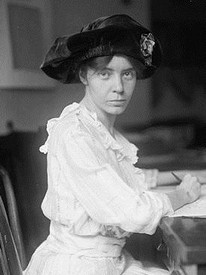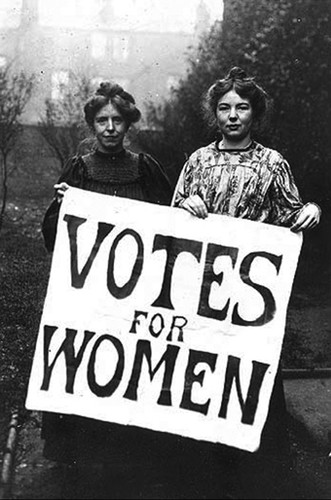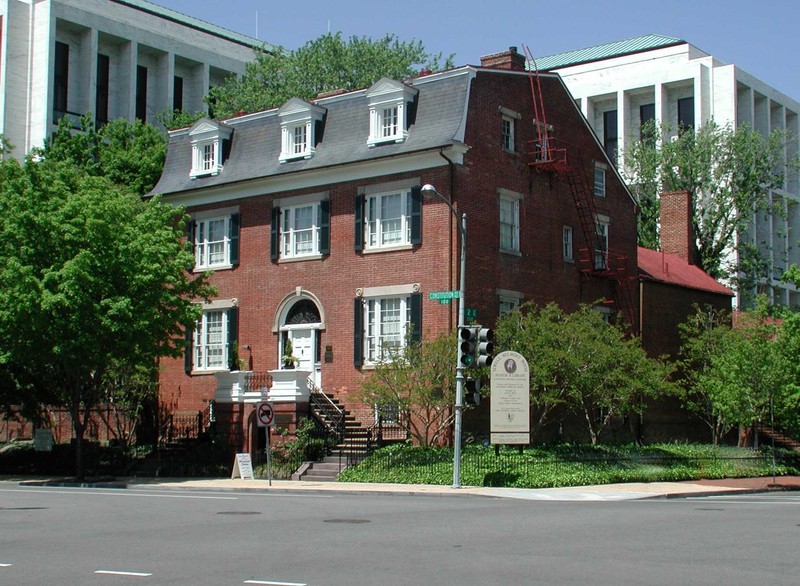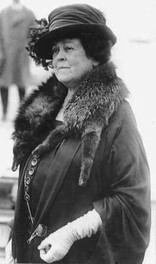The Belmont-Paul Women's Equality National Monument
Introduction
Text-to-speech Audio
Images
Alice Paul, around 1915

Suffragists

The Belmont-Paul Women’s Equality National Monument serves as a physical reminder of the fight suffragists fought for women’s equality.

Alva Belmont, suffragist who contributed to the National Women's Party and aided them in the purchase of the Belmont-Paul Women's Equality National Monument.

Backstory and Context
Text-to-speech Audio
The Belmont-Paul Women’s Equality National Monument has been the home to the National Women’s Party for more than 200 years. The original house at this location was built by Robert Sewall, one of Maryland's most influential residents, in 1800. Sewall rented that house to Jefferson and Madison's Secretary of the Treasury Albert Gallatin from 1801 to 1813. The house was destroyed by the British during their invasion and occupation of Washington in the War of 1812. Sewall rebuilt the house and construction was done before his death in 1820. The house was purchased by Senator and Mrs. Porter Dale of Vermont.
This property has had several name changes. Known as the Sewall House at the time the NWP acquired the property, it was later known as the Alva Belmont House. Belmont was a wealthy socialite and a key figure in the Women’s Suffrage Movement. Belmont donated money to suffrage organizations in the United Kingdom and the United States. She also founded the Political Equality League in 1909. this organization merged with the Congressional Union in 1913. With Alva Belmont’s financial support, the National Women’s Party bought the home from the Senator. They renamed the home the “Alva Belmont House.”
The National Woman’s Party was founded in 1917, during the Women’s Suffrage Movement, largely due to the work of Alice Paul.Alice Paul was a leading suffragist and worked with the National Women’s Party to push for both state and national legislation that would recognize the political rights of women as citizens. Alice Paul was a key figure in the revival of the movement after the deaths of two of its best-known figures, Elizabeth Cady Stanton and Susan B. Anthony. Paul created the Congressional Union for Woman Suffrage (CU), which was part of the National American Woman Suffrage Association (NAWSA). However, the NAWSA leadership viewed Paul’s political methods as too extreme. So, the CU split from the NAWSA in 1914.
Alice Paul, along with many other suffragists, spent time in prison due to her political actions. As a manner of protesting the harsh conditions in prison, where the women received no special treatment as political prisoners, she famously began a hunger strike. Because of this, she was moved to the prison’s psychiatric ward and force-fed through a tube. In 1916, the Congressional Union created the National Woman’s Party.
The Congressional Union formed the Woman’s Party in 1916, and a year later they merged to form the National Women’s Party. The National Women’s Party advocated for women’s right to vote even when some men reacted violently to their non-violent protests. For example, men tore banners from the hands of suffragists and many women were physically attacked. Suffragists such as Paul were also arrested but found ways to continue to publicize their issue by launching hunger strikes while in prison. After decades of organized protest against their exclusion from the ballot box beginning with the Seneca Falls convention in 1848, Congress recognized women’s right to vote through the passage of the 19th Amendment in 1919. Paul and others worked to secure ratification of the Amendment the following year. In 1923, Paul wrote the Equal Rights Amendment which was passed by Congress in 1972 but never ratified.
Sources
2. Women of the 1900s You Need to Know. National Park Foundation. . Accessed August 27, 2018. https://www.nationalparks.org/connect/blog/women-1900-you-need-know.
3. National Parks Foundation, National Park Service, March 8, 2018, https://www.nationalparks.org/connect/blog/women-1900-you-need-know.
4. Born to Wander. "Belmont-Paul Women's Equality National Monument." Youtube, September 22, 2017, https://www.youtube.com/watch?v=YA3_1B5-EGo.
5. Belmont-Paul Women's Equality National Monument. National Park Foundation. . Accessed August 27, 2018. https://www.nationalparks.org/explore-parks/belmont-paul-womens-equality-national-monument.
6. National Women's History Museum, National Women's History Museum, https://www.womenshistory.org/education-resources/biographies/alice-paul.
7. Visit. National Women's Party. . Accessed August 29, 2018. https://www.nationalwomansparty.org/visit.
8. Hours & Admission. National Women's Party. . Accessed August 29, 2018. https://www.nationalwomansparty.org/hours-admission.
9. "Alva Belmont." Britannica.com, neg. no LC USZ 62 105290, Library of Congress, https://www.britannica.com/biography/Alva-Belmont.
10. Alva Belmont American Suffragist. Britannica. July 20, 1998. Accessed August 29, 2018. https://www.britannica.com/biography/Alva-Belmont.
